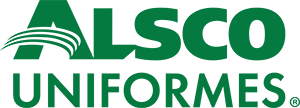
Dust mops are simple, cost-efficient floor care tools that come in various sizes, styles and colors. These dry mops are ideal for cleaning dust, dirt and loose debris from hard floors and hard-to-reach locations, such as ceilings and walls. Businesses with a physical location and hard flooring can benefit from using a dust mop.
These mops are not intended to be wet, and they differ from regular wet mops. They can be used every few days to keep loose dirt, debris and dust off the floors to protect them and keep the facility clean.
What Is a Dust Mop?
Dust mops can help protect hard floors from dirt and grit being ground in by removing these particles, which can damage and scratch floors. They can also remove layers of dust, which can contribute to allergies and is unsightly.
Dust mops are easy to use and available in various sizes and materials. Many even have extendable handles to reach out-of-the-way spots like corners and ceilings, where cobwebs can collect. Dust mops can also have large or small heads designed for the surface area you need to keep clean.
Originally, dust mops had large flat heads permanently affixed to the handle. They were pushed along the floor using a mop head covered with wool or cotton yarn strings to collect and trap hair, lint and dust. Because of the swivel head where the mop attached to the handle, it could move around obstacles and clean hard-to-reach locations easily.
These traditional dust mops had to be beaten or shaken clean between uses. They also had to be regularly soaked in soapy water.
Modern dust mops are typically made from microfiber materials that are more efficient for trapping dust and debris. Many have removable heads that can be machine washed, making them more cost-effective. There are also a variety of disposable dust mops on the market today, like the revolutionary Swiffer, that offer a high level of convenience.
How to Use a Dust Mop
To use a dust mop, you must first ensure that the mop head is clean. Then, follow these five steps:
Assemble the mop as directed. Ensure the mop head is completely dry and assembled tightly according to the manufacturer’s instructions.
Remove obstacles from your path. Although you can dust around and under large furniture, moving small items such as area rugs or trash cans from the area you are mopping before beginning is optimal.
Keep the mop flat on the floor and work in straight lines. Start at one edge of the room and make long, overlapping straight passes, keeping loose debris and dirt in front of the mop. Keep the mop flat on the floor, and be sure to cover the entire surface area.
Sweep or vacuum loose debris. The dust mop is great for trapping lint, hair and dust but commonly leaves a pile of dirt and debris. If at any point this pile gets large — or when you are done — be sure to vacuum or sweep up the pile with a broom and dustpan.
Clean the mop as directed for storage. Always clean the dust mop after each use. If the mop has a fixed head, you must take it outside and vigorously shake it to remove as much lint, dust and hair as possible. Launder washable mop heads according to the manufacturer’s instructions. Disposable dust mop heads can be thrown away. The mop should be hung when stored to keep the mop-head fibers from becoming matted.
You should mop your hard floors with a dust mop regularly, every few days or as needed, especially in high-traffic areas. Disposable dust mop heads can often be reused by flipping them over and using the other side before you throw them away. When purchasing washable dust mop heads, buying two at a time can be helpful so you have one available if the other is being washed.
Additionally, it can be helpful to use Alsco’s floor-care services. We can provide your business with dust mops that are easier on your budgets and more effective at cleaning your floors, as well as other solutions to keep your floors clean and protected.
References
Best Practices - Alternative Mopping System. Minnesota Department of Labor and Industry.
Swiffer. (2022). Procter & Gamble.
